Potrebujeme váš súhlas na využitie jednotlivých dát, aby sa vám okrem iného mohli ukazovať informácie týkajúce sa vašich záujmov. Súhlas udelíte kliknutím na tlačidlo „OK“.
ASTM E2766-13
Standard Practice for Installation of Roof Mounted Photovoltaic Arrays on Steep-Slope Roofs
Automaticky preložený názov:
Štandardný postup inštalácie z strešné fotovoltaické články na príkrych svahoch Strechy
NORMA vydaná dňa 1.6.2013
Informácie o norme:
Označenie normy: ASTM E2766-13
Poznámka: NEPLATNÁ
Dátum vydania normy: 1.6.2013
Kód tovaru: NS-46002
Počet strán: 4
Približná hmotnosť: 12 g (0.03 libier)
Krajina: Americká technická norma
Kategória: Technické normy ASTM
Kategórie - podobné normy:
Anotácia textu normy ASTM E2766-13 :
Keywords:
array mounting systems, photovoltaic (PV), photovoltaic (PV) installations, racking systems, roof penetration flashing, steep-slope roofing, structural loading, ICS Number Code 27.160 (Solar energy engineering)
Doplňujúce informácie
| Significance and Use | ||||||||||||||||||||||||||||
|
4.1 With the rapid growth of the use of photovoltaic systems in buildings, roof mounted arrays continue to be one of the most prevalent forms of installations. These roof mounted arrays typically feature penetrations into the roof system, which can result in water leakage issues if not properly flashed or applied to the roof system. 4.2 Structural integrity and durability of the application of the roof mounted array to the roof system must be adequate per applicable codes and regulations. This applies to both the photovoltaic module-to-array mounting structure interface and the array mounting structure-to-roof interface. 4.3 The installation of roof mounted arrays presents certain hazards that must be addressed, which include fall protection, carrying loads up ladders, wind and rain exposure during installation, and electrical exposure during connections. 4.4 The topics covered in 1.1 This practice details minimum requirements for the installation of roof mounted photovoltaic arrays on steep-sloped roofs with water-shedding roof coverings. These requirements include proper water-shedding integration with the roof system, material properties, flashing of roof penetrations, and sufficient anchoring per regional design load requirements. 1.1.1 This practice does not apply to building-integrated or adhesively attached photovoltaic systems that are applied as roof-covering components. 1.2 This practice does not cover the electrical aspects of installation. 1.3 Installation considerations are divided into two distinct aspects: the interface between the photovoltaic module and the array mounting structure, and the interface between the array mounting structure and the roof or roof structure. 1.4 Safety and hazard considerations unique to this application, such as worker fall protection, electrical exposure, accessibility of modules, and roof clearance around the perimeter of the array are addressed by other codes, standards, or authorities having jurisdiction. 1.5 This practice is intended to provide recommended installation practices for use by installers, specifiers, inspectors, or for specification by photovoltaic module manufacturers. 1.6 This practice provides minimum guidelines and should be used in conjunction with module and mounting system manufacturers’ instructions. This practice offers a set of instructions for performing one or more specific operations. This document cannot replace education or experience and should be used in conjunction with professional judgment. Not all aspects of this practice may be applicable in all circumstances. This ASTM Standard is not intended to represent or replace the standard of care by which the adequacy of a given professional service must be judged, nor should this document be applied without consideration of a project’s many unique aspects. The word “Standard” in the title means only that the document has been approved through the ASTM consensus process. 1.7 This practice is not intended to replace or supersede any other applicable local codes, standards or Licensed Design Professional instructions for a given installation. 1.8 This standard does not
purport to address all of the safety concerns, if any, associated
with its use. It is the responsibility of the user of this standard
to establish appropriate safety and health practices and determine
the applicability of regulatory limitations prior to use.
NDS National Design Specification for
Wood Construction NFPA 1 Fire Protection Code IFC International Fire Code IEC International Electrical Code IBC International Building Code UL 60950–1 Table J.1 Electrotechnical Potentials
(V) UL 746C Polymeric Materials--Use in Electrical
Equipment Evaluations UL 1703 Standard for Flat-Plate Photovoltaic
Modules and Panels IEC 61730–1 (2004–10) Photovoltaic (PV) Module Safety
Qualification-Part One: Requirements for Construction AAMA 800 Voluntary Specifications and Test Methods
for Sealants Standard Terminology of Solar Energy
Conversion Standard Test Method for Assessing
Combustibility of Materials Using a Vertical Tube Furnace at 750
?C Standard Terminology Relating to Roofing
and Waterproofing Standard Test Methods for Mechanical
Fasteners in Wood and Wood-Based Materials |
Podobné normy:
Historická
1.6.2010
Historická
1.12.2012
Historická
1.12.2012
Historická
1.4.2009
Historická
1.6.2010
Historická
1.6.2010
Odporúčame:
Aktualizácia technických noriem
Chcete mať istotu, že používate len platné technické normy?
Ponúkame Vám riešenie, ktoré Vám zaistí mesačný prehľad o aktuálnosti noriem, ktoré používate.
Chcete vedieť viac informácií ? Pozrite sa na túto stránku.


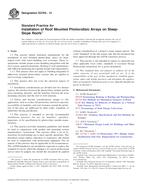
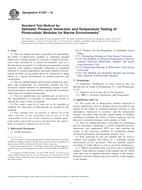 ASTM E1597-10
ASTM E1597-10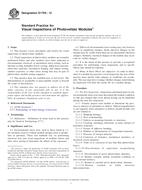 ASTM E1799-12
ASTM E1799-12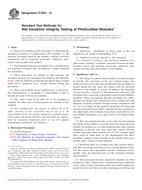 ASTM E1802-12
ASTM E1802-12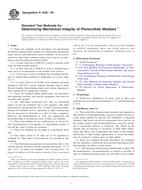 ASTM E1830-09
ASTM E1830-09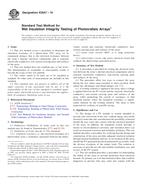 ASTM E2047-10
ASTM E2047-10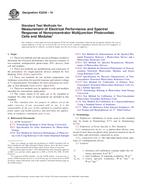 ASTM E2236-10
ASTM E2236-10
 Cookies
Cookies
